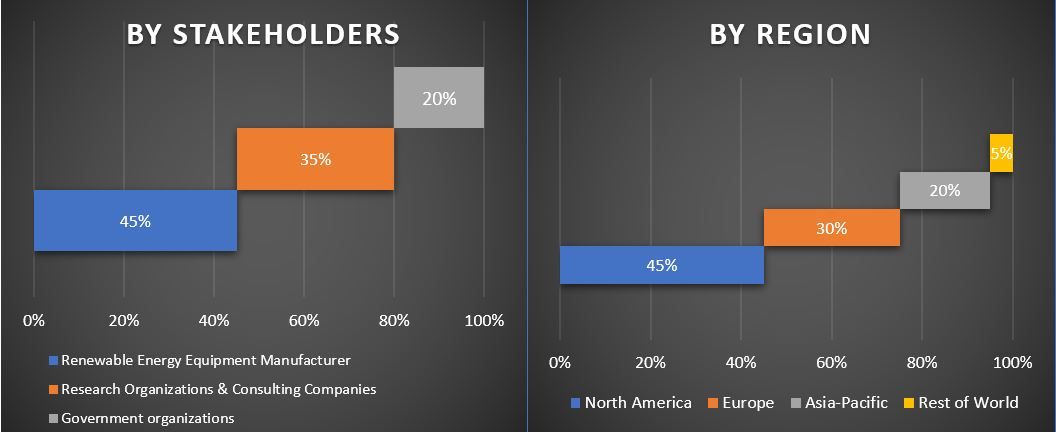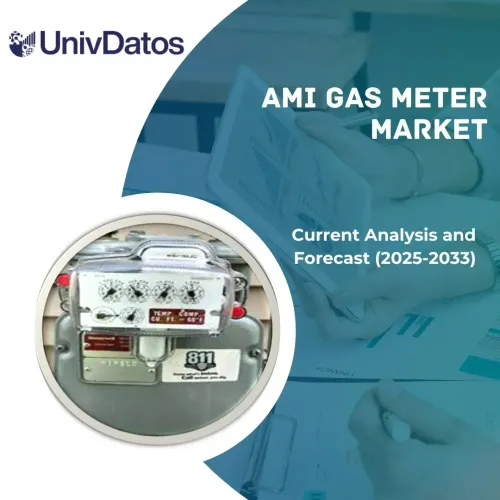- Home
- About Us
- Industry
- Services
- Reading
- Contact Us
Renewable Energy Market: Current Analysis and Forecast (2021-2027)
Emphasis on Type (Hydroelectric Power, Wind Power, Bioenergy, Solar Energy, Geothermal Energy); End-Use (Residential, Commercial, Industrial, Others); Region and Country

In 2020, the renewable generation capacity increased by 10.3% which is 260 GW. Solar energy continued to lead the capacity expansion, with an increase of 127 GW (+22%), followed closely by wind energy with 111 GW (+18%). Hydropower capacity increased by 20 GW (+2%) and bioenergy by 2 GW (+2%). Geothermal energy increased by 164 MW. Solar and wind energy continued to dominate renewable capacity expansion, jointly accounting for 91% of all net renewable additions in 2020. Some of the regions across the globe such as North America have some of the world’s richest wind, solar, geothermal, hydro, and biomass resources. The region relies on renewable energy for large-scale power generation, particularly in the form of hydropower. Hydropower accounts for 63% of electricity generation, in Canada whereas, some dams are more than 100 years old in the country. Furthermore, wind and solar energy are poised to contribute 90-95% new electricity generation to the grid in North America by 2050, as revealed by North American Renewable Integration Study (NARIS).
In 2020, the consumption of all other fuels declined while the only source which increased the demand for energy sources was renewables. As the global economy recovers from the crisis, The renewable energy source witnessed an uptake, therefore, expand more quickly. As per International Energy Agency (IEA), in 2020, the annual renewable capacity additions increased witnessed the highest year-on-year increase since 1999 and increased by 45% or 280 GW. Furthermore, exceptionally high-capacity additions become the “new normal” in 2021 and 2022, with renewables accounting for 90% of new power capacity expansion globally.
Projected Energy Worldwide (In Trillion Kilowatt Hours), By Energy Source, 2018-2050
General Electric, ABB Ltd., The TATA Power Company Limited, Energex, Enel Spa, Xcel Energy Inc., EDF, Geronimo Energy, Invenergy, and ACCIONA, among others are some of the prominent players operating in the global Renewable Energy market. Several M&As along with partnerships have been undertaken by these players to facilitate customers with hi-tech and innovative products.
Insights Presented in the Report
“Amongst Type, Hydroelectric Power segment holds the major share”
Based on the type, the market is fragmented into Hydroelectric Power, Wind Power, Bioenergy, Solar Energy, and Geothermal Energy. The Hydroelectric Power segment dominated the market with a share of XX% in 2020 and is expected to maintain its dominance during the forecast period owing to the growing demand for hydroelectric power are emerging demand for clean energy due to the limited availability of fossil fuel around the world. As per IRENA, the total installed capacity of hydropower increased from 1,099,767 MW in 2015 which increased to 1,210,616 MW by 20
“Amongst End-Use Type, Industrial segment dominated the market during the forecast period”
Based on end-use type, the market is mainly fragmented into Residential, Commercial, Industrial, and Others. In 2020, the Industrial segment accounted for a maximum market revenue share of XX% and is expected to remain dominant during the analyzed period. The promulgating industries such as chemical, food and beverage, manufacturing, etc. are contributing to the growth of the market. As per IEA, The chemical sector is the largest industrial consumer of both oil and gas, and the Chemical sector’s share of the total primary demand for oil in 2018 was 14%
“Asia-Pacific represents one of the largest markets of Renewable Energy market”
For a better understanding of the market dynamics of the Renewable Energy market, a detailed analysis was conducted for different regions across the globe including North America (the U.S, Canada, and the Rest of North America), Europe (Germany, France, Spain, United Kingdom, Italy, and Rest of Europe), Asia-Pacific (China, Japan, India, Australia, South-Korea, and Rest of APAC), Rest of World has been conducted. Asia-Pacific dominated the market and generated revenue of US$ XX million in 2020 owing to the emerging number of renewable energy power plants across countries such as China, Japan, India, etc.,
Reasons to buy this report:
- The study includes market sizing and forecasting analysis validated by authenticated key industry experts
- The report presents a quick review of overall industry performance at one glance
- The report covers an in-depth analysis of prominent industry peers with a primary focus on key business financials, product portfolio, expansion strategies, and recent developments
- Detailed examination of drivers, restraints, key trends, and opportunities prevailing in the industry
- The study comprehensively covers the market across different segments
- Deep dive regional level analysis of the industry
Customization Options:
The Renewable Energy Market can further be customized as per the requirement or any other market segment. Besides this, UMI understands that you may have your own business needs, hence feel free to connect with us to get a report that completely suits your requirements.
Table of Content
Analyzing the historical market, estimation of the current market, and forecasting the future market of the Global Renewable Energy Market were the three major steps undertaken to create and analyze the adoption of Renewable Energy for the different diseases across major regions globally. Exhaustive secondary research was conducted to collect the historical market numbers and estimate the current market size. Secondly, to validate these insights, numerous findings and assumptions were taken into consideration. Moreover, exhaustive primary interviews were also conducted, with industry experts across the value chain of the Renewable Energy sector. Post assumption and validation of market numbers through primary interviews, we employed a top-down/bottom-up approach to forecast the complete market size. Thereafter, market breakdown and data triangulation methods were adopted to estimate and analyze the market size of segments and sub-segments the industry pertains to. Detailed methodology is explained below:
Analysis of Historical Market Size
Step 1: In-Depth Study of Secondary Sources:
Detailed secondary study was conducted to obtain the historical market size of the Renewable Energy through company internal sources such as annual reports & financial statements, performance presentations, press releases, etc., and external sources including journals, news & articles, government publications, competitor publications, sector reports, third-party database, and other credible publications.
Step 2: Market Segmentation:
After obtaining the historical market size of the Renewable Energy market, we conducted a detailed secondary analysis to gather historical market insights and share for types, end-use for major regions. Major segments included in the report are end-use, and regions. Further country-level analyses were conducted to evaluate the overall adoption of Renewable Energy in that region.
Step 3: Factor Analysis:
After acquiring the historical market size of different segments and sub-segments, we conducted a detailed factor analysis to estimate the current market size of Renewable Energy. Further, we conducted factor analysis using dependent and independent variables such as the surging demand for clean energy, reducing the price of renewables, and government regulation. A thorough analysis was conducted for demand and supply-side scenarios considering top partnerships, merger and acquisition, business expansion, and product launches in the Renewable Energy industry across the globe.
Current Market Size Estimate & Forecast
Current Market Sizing: Based on actionable insights from the above 3 steps, we arrived at the current market size, key players in the Renewable Energy market, and market shares of the segments. All the required percentage shares split, and market breakdowns were determined using the above-mentioned secondary approach and were verified through primary interviews.
Estimation & Forecasting: For market estimation and forecast, weightage was assigned to different factors including drivers & trends, restraints, and opportunities available for the stakeholders. After analyzing these factors, relevant forecasting techniques i.e., bottom-up/top-down approach was applied to arrive at the market forecast about 2027 for different segments and subsegments across the major markets globally. The research methodology adopted to estimate the market size encompasses:
- The industry’s market size, in terms of value (US$) and the adoption rate of Renewable Energy across the major markets domestically
- All percentage shares, splits, and breakdowns of market segments and sub-segments
- Key players in the Renewable Energy market in terms of services offered. Also, the growth strategies adopted by these players to compete in the fast-growing market
Market Size and Share Validation
Primary Research: In-depth interviews were conducted with the Key Opinion Leaders (KOLs) including Top Level Executives (CXO/VPs, Sales Head, Marketing Head, Operational Head, and Regional Head, Country Head, etc.) across major regions. Primary research findings were then summarized, and statistical analysis was performed to prove the stated hypothesis. Inputs from primary research were consolidated with secondary findings, hence turning information into actionable insights.
Split of Primary Participants in Different Regions
Market Engineering
Data triangulation technique was employed to complete the overall market estimation and to arrive at precise statistical numbers of each segment and sub-segment of the Renewable Energy market. Data was split into several segments & sub-segments post studying various parameters and trends in the areas of motor type and applications of the Renewable Energy market.
Main Objective of the Renewable Energy Market Study
The current & future market trends of Renewable Energy were pinpointed in the study. Investors can gain strategic insights to base their discretion for investments from the qualitative and quantitative analysis performed in the study. Current and future market trends were determined the overall attractiveness of the market at a regional level, providing a platform for the industrial participant to exploit the untapped market to benefit as a first-mover advantage. Other quantitative goals of the studies include:
- Analyze the current and forecast market size of Renewable Energy in terms of value (US$). Also, analyze the current and forecast market size of different segments and sub-segments
- Segments in the study include areas of application, technology, material, tissue type, and end-user sector
- Define and analysis of the regulatory framework for the Renewable Energy industry
- Analyze the value chain involved with the presence of various intermediaries, along with analyzing customer and competitor behaviors of the industry
- Analyze the current and forecast market size of the Renewable Energy market for the major region
- Major regions studied in the report include North America (the U.S and Canada), Europe (Germany, France, U.K Spain, and Italy), Asia-Pacific (China, Japan, Australia, South-Korea, and India), Rest of the World
- Company profiles of the Renewable Energy market and the growth strategies adopted by the market players to sustain in the fast-growing market
- Deep dive regional level analysis of the industry
Related Reports
Customers who bought this item also bought












